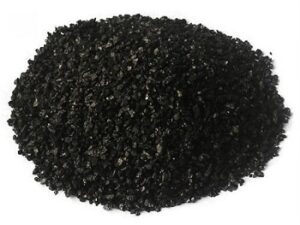Description
Wood-Based Activated Carbon: A Sustainable Solution for a Cleaner Future
Activated carbon, a form of carbon processed to have a small, low-volume pores that increase the surface area available for adsorption or chemical reactions, is a powerful tool used in a vast range of applications, from water purification to air filtration and even medical treatments. While various source materials can be used to produce activated carbon, wood is emerging as a particularly compelling option due to its renewable nature and the potential for sustainable production. This article delves into the world of wood-based activated carbon, exploring its benefits, production methods, and diverse applications.
The Allure of Wood: A Sustainable Feedstock
Traditionally, activated carbon has been derived from sources like coal and petroleum coke. However, these materials are finite and contribute to environmental concerns. Utilizing wood as the precursor offers several key advantages:
- Renewability: Wood is a naturally renewable resource, making it a more sustainable option than fossil fuel-based materials.
- Abundance: Depending on the region, wood waste and byproducts from forestry and agriculture can be readily available, further enhancing its cost-effectiveness and reducing waste.
- Lower Ash Content: Compared to coal-based activated carbon, wood-based variants often possess lower ash content, which can lead to higher purity and improved performance in certain applications.
- Tailorable Pore Structure: The inherent structure of wood allows for greater control over the final pore size distribution during the activation process, enabling the creation of activated carbon tailored for specific needs.
From Wood to Activated Carbon: Production Processes
The production of wood-based activated carbon generally involves two main steps: carbonization and activation.
- Carbonization: This process involves heating the wood in an oxygen-free environment to temperatures ranging from 400 to 700°C. This pyrolyzes the wood, driving off volatile compounds and leaving behind a carbon-rich material with a basic pore structure.
- Activation: This crucial step further develops the porosity of the carbonized material, vastly increasing its surface area. Activation can be achieved through two primary methods:
- Physical Activation: This method uses oxidizing gases like steam, carbon dioxide, or air at high temperatures (700-1000°C) to burn off the remaining volatile organic compounds and create more pores.
- Chemical Activation: This method involves impregnating the wood with chemicals like phosphoric acid, potassium hydroxide, or zinc chloride before carbonization. These chemicals act as catalysts, promoting the formation of a highly porous structure during the carbonization process.
The specific method chosen and the parameters within each step (temperature, time, activating agent) significantly influence the final characteristics of the activated carbon, including its pore size distribution, surface area, and adsorption capacity.
A Multifaceted Material: Diverse Applications
The tailored properties of wood-based activated carbon make it suitable for a wide array of applications:
- Water Purification: Removing contaminants like chlorine, organic compounds, and heavy metals from drinking water, wastewater treatment, and aquarium filtration.
- Air Filtration: Absorbing odors, volatile organic compounds (VOCs), and other pollutants from the air in homes, offices, and industrial settings.
- Industrial Processes: Decolorizing solutions, purifying chemicals, and recovering valuable solvents in various industrial applications.
- Medical Applications: As an antidote for certain poisons and drugs, and in wound dressings to absorb toxins and promote healing.
- Food and Beverage Industry: Decolorizing sugar, purifying alcoholic beverages, and removing unwanted flavors or odors.
- Agriculture: Used as a soil amendment to improve water retention, nutrient availability, and overall soil health.
Looking Ahead: Opportunities and Challenges
The future of wood-based activated carbon is bright, with increasing demand driven by growing environmental awareness and stricter regulations on water and air quality. However, challenges remain:
- Optimization of Production Processes: Further research is needed to optimize the production process, making it more efficient and cost-effective while minimizing environmental impact.
- Feedstock Variability: The properties of wood-based activated carbon can vary depending on the type of wood used. Standardizing feedstock and developing techniques to mitigate this variability are crucial.
- Life Cycle Assessment: Conducting thorough life cycle assessments to fully evaluate the environmental footprint of wood-based activated carbon production and use is important to ensure its true sustainability.
Despite these challenges, wood-based activated carbon represents a promising sustainable solution for numerous environmental and industrial applications. By continuing to innovate in production techniques and explore new applications, we can harness the power of this versatile material to create a cleaner and healthier future. As we strive for a circular economy and a more sustainable world, wood-based activated carbon stands out as a valuable tool in our arsenal.















Reviews
There are no reviews yet.